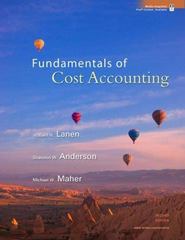Question
Blades, Inc. Case Forecasting Exchange Rates (two questions at the end of the case study) Recall that Blades, Inc., the U.S.-based manufacturer of roller blades,
Blades, Inc. Case Forecasting Exchange Rates (two questions at the end of the case study)
Recall that Blades, Inc., the
U.S.-based manufacturer of roller blades, is currently both exporting to and
importing from Thailand. Ben Holt, Blades' chief financial officer (CFO), and
you, a financial analyst at Blades, Inc., are reasonably happy with Blades'
current performance in Thailand. Entertainment Products, Inc., a Thai retailer
for sporting goods, has committed itself to purchase a minimum number of
Blades' Speedos annually. The agreement will terminate after three years.
Blades also imports certain components needed to manufacture its products from
Thailand. Both Blades' imports and exports are denominated in Thai baht.
Because of these arrangements, Blades generates approximately 10 percent of its
revenue and 4 percent of its cost of goods sold in Thailand. Currently, Blades'
only business in Thailand consists of this export and import trade. Holt,
however, is thinking about using Thailand to augment Blades' U.S. business in
other ways as well in the future. For example, Holt is contemplating establishing
a subsidiary in Thailand to increase the percentage of Blades' sales to that
country. Furthermore, by establishing a subsidiary in Thailand, Blades will
have access to Thailand's money and capital markets. For instance, Blades could
instruct its Thai subsidiary to invest excess funds or to satisfy its
short-term needs for funds in the Thai money market. Furthermore, part of the
subsidiary's financing could be obtained by utilizing investment banks in
Thailand. Due to Blades' current arrangements and future plans, Holt is
concerned about recent developments in Thailand and their potential impact on
the company's future in that country. Economic conditions in Thailand have been
unfavorable recently. Movements in the value of the baht have been highly volatile,
and foreign investors in Thailand have lost confidence in the baht, causing
massive capital outflows from Thailand. Consequently, the baht has been
depreciating. When Thailand was experiencing a high economic growth rate, few
analysts anticipated an economic downturn. Consequently, Holt never found it
necessary to forecast economic conditions in Thailand even though Blades was
doing business there. Now, however, his attitude has changed. A continuation of
the unfavorable economic conditions prevailing in Thailand could affect the
demand for Blades' products in that country. Consequently, Entertainment
Products may not renew its commitment for another three years. Because Blades
generates net cash inflows denominated in baht, a continued depreciation of the
baht could adversely affect Blades, as these net inflows would be converted
into fewer dollars. Thus Blades is also considering hedging its
baht-denominated inflows. Because of these concerns, Holt has decided to
reassess the importance of forecasting the baht-dollar exchange rate. His
primary objective is to forecast the baht-dollar exchange rate for the next
quarter. A secondary objective is to determine which forecasting technique is
the most accurate and should be used in future periods. To accomplish this, he
has asked you, as the financial analyst at Blades, for help in forecasting the
baht-dollar exchange rate for the next quarter. Holt is aware of the
forecasting techniques available. He has collected some economic data and
conducted a preliminary analysis for you to use in your analysis. For example,
he has conducted a time-series analysis for the exchange rates over numerous
quarters. He then used this analysis to forecast the baht's value next quarter.
The technical forecast indicates a depreciation of the baht by 6 percent over
the next quarter from the baht's current level of $.023 to $.02162. He has also
conducted a fundamental forecast of the baht-dollar exchange rate using
historical inflation and interest rate data. The fundamental forecast, however,
depends on what happens to Thai interest rates during the next quarter and
therefore reflects a probability distribution. Based on the inflation and
interest rates, there is a 30 percent chance that the baht will depreciate by 2
percent, a 15 percent chance that the baht will depreciate by 5 percent, and a
55 percent chance that the baht will depreciate by 10 percent.
Questions:
1 - Use technical forecasting including the performance evaluation
bias and its graphic evaluation to forecast the future of the baht.
2 -Which forecasting technique (fundamental, technical or
market-based) would be easiest to use in forecasting the future value of the
baht? Why?
Step by Step Solution
There are 3 Steps involved in it
Step: 1

Get Instant Access to Expert-Tailored Solutions
See step-by-step solutions with expert insights and AI powered tools for academic success
Step: 2

Step: 3

Ace Your Homework with AI
Get the answers you need in no time with our AI-driven, step-by-step assistance
Get Started


